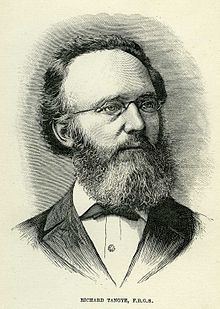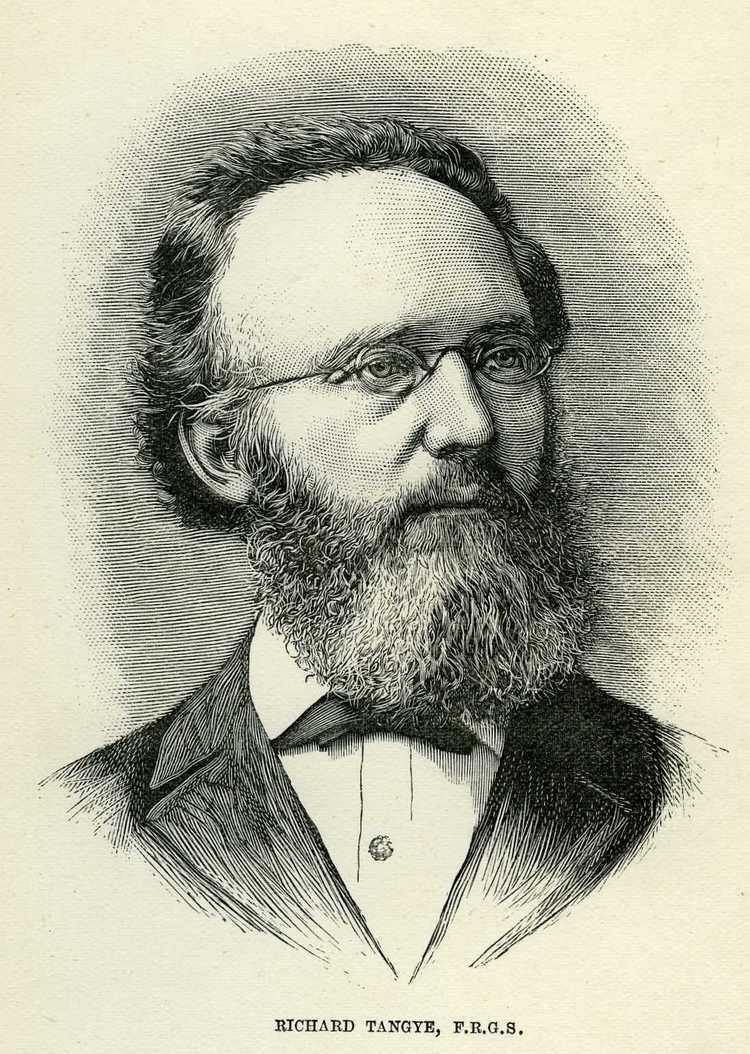Role Engineer Name Richard Tangye | ||
 | ||
Significant projects SS Great EasternSaltburn Cliff Lift Died October 14, 1906, Surrey, United Kingdom Books Reminiscences of travel in Australia, America, and Egypt, The two protectors: Oliver and Richard Cromwell Children Richard Trevithick Gilbertstone Tangye, Harold Lincoln Tangye Grandchildren Derek Tangye, Nigel Tangye, Basil Richard Gilzean Tangye | ||
Engineering discipline Mechanical engineer Great grandchildren Ann Francesca Tangye | ||
Sir Richard Trevithick Tangye (24 November 1833 – 14 October 1906) was a British manufacturer of engines and other heavy equipment.
Contents

Biography
Richard Tangye was born at Illogan, near Redruth, Cornwall, the son of a shopkeeper and farmer. As a young boy he worked in the fields, but when he was eight years old he was incapacitated from further manual labour by a fracture of the right arm. His father then determined to give him the best education he could afford, and young Tangye was sent to the Quaker Sidcot School in the Mendip Hills near the village of Winscombe, Somerset, where he progressed rapidly and became a pupil-teacher.
Career
Tangye disliked this role, and through an advertisement in The Friend obtained a clerkship in a small engineering firm in Birmingham, where two of his brothers, skilled mechanics, subsequently joined him. Here Richard Tangye remained four years, obtaining a complete mastery of the details of an engineering business, and introducing the system of a Saturday half-holiday which he had supported on its introduction by John Frearson, the radical Birmingham Engineer. It was subsequently adopted in many English industrial works.
Tangye Ltd
In 1856, Tangye started business in a small way in Birmingham as a hardware factor and commission agent. His first customers were the Cornish mine-owners in the Redruth district.
In March 1857, Richard Tangye, with brothers James and Joseph, started a manufacturing business in Mount Street under the title of James Tangye and Bros. Principally manufacturing hydraulic appliances and particularly lifting jacks, on 31 January 1858, their jacks were successfully employed in the launching of Brunel's steamship SS Great Eastern. Tangye said of the project:
We launched the Great Eastern and she launched us
In 1859, brothers Edward and George joined, together with George Price. The company acquired the patent of the differential pulley-block in 1861, and in 1862 James Tangye invented the Tangye Patent Hydraulic Jack. This resulted in the 1862 purchase and demolition of Soho-located Smethwick Hall, on the site of which was built the Cornwall Works. In 1867 the patent for a new type of Direct-acting Steam Pump was acquired, and in 1870 the company commenced the manufacture of steam engines.
The company was commissioned to design the hydraulic systems for the UK's first funicular cliff railway in Scarborough, North Yorkshire, in 1869. After completing another in Scarborough, they employed George Croydon Marks as head of lifts, in which capacity he designed the 1883 Saltburn Cliff Lift, which today is the oldest water-powered cliff railway in the United Kingdom.
In 1872, the two youngest brothers, Richard and George, became sole proprietors. They developed the company internationally, opening offices in Johannesburg and Sydney. The first gas engine, a 1 nominal horsepower two-cycle type, was sold in 1881, and in 1890 the firm commenced manufacture of the four-cycle gas engine. Incorporated as a limited company from 1881, in 1894 they produced their first hot bulb engine. Richard Tangye was knighted in 1894.
Tangye travelled extensively, visiting Australia more than once and also New Zealand and America. He sought to restore his health on the ocean voyages but his main purpose in going to these countries was to expand his business. His accounts of his travels reveal a man who was annoyed that he was not shown the deference by hotel employees that he enjoyed in Britain and who was often unimpressesd by the food he was presented with (excluding the fruit, which he greatly liked) - but who enjoyed being recognised and was pleased when he saw evidence of progress e.g. in the establishment of libraries.
Philanthropy
Richard Tangye and his brother George were founding benefactors of Birmingham Museum & Art Gallery in 1885, which today has a collection of international importance covering fine art, ceramics, metalwork, jewellery, archaeology, ethnography, local history and industrial history. They also helped found Birmingham School of Art.
Tangye was a noted collector of Oliver Cromwell manuscripts and memorabilia. His collection included many rare manuscripts and printed books, medals, paintings, objets d'art and a bizarre assemblage of 'relics'. The 'relics' included Cromwell's Bible, button, coffin plate, death mask and funeral escutcheon. On Tangye's death, the entire collection was donated to the Museum of London, where it can still be seen today. Items from the Tangye Collection are also to be found at the Cromwell Museum.
Personal life
Married, Tangye lived in Birmingham,and latterly London, but often returned to his cliff-edge house in Newquay, Cornwall. Richard Tangye has been described by his biographer as a man of great resolve with considerable talents for promoting his business, but also very much valuing his privacy and never wishing to hold public office in Birmingham. (Stephen Roberts, 'Sir Richard Tangye 1833-1906: A Cornish Entrepreneur in Victorian Birmingham, 2015). He was the grandfather of the authors Derek Tangye and Nigel Tangye. Through his niece Helena Tangye Lean, he was a great-uncle of film maker David Lean and his brother Edward Tangye Lean, founder of the Inklings.
After death
After the deaths of Richard (1906) and George (1920), with the family owning the majority of shares, their sons entered the business. In 1919, the company started production of large-scale industrial diesel engines, pumps and hydraulic equipment. Engine production was stopped after World War II, with the company concentrating on hydraulic pumps, valves and related systems.
Examples of Tangye engines
The various engines had an elegance as well as being functional. Here are some examples in various museums.
